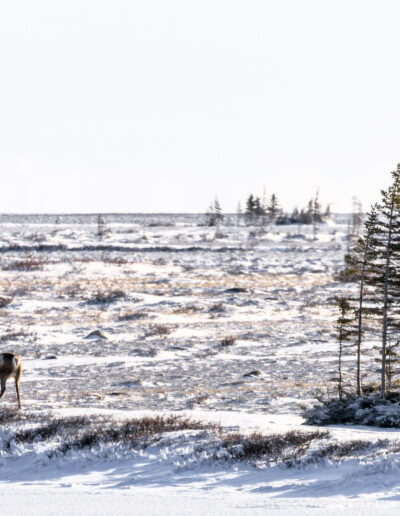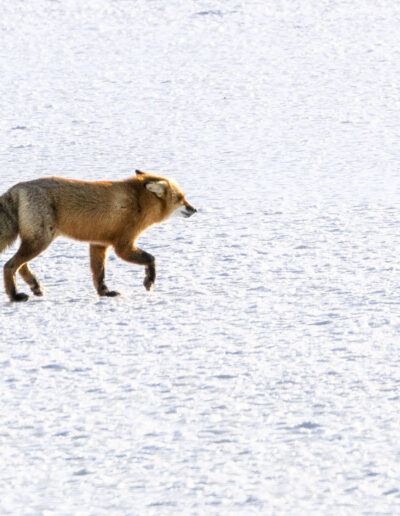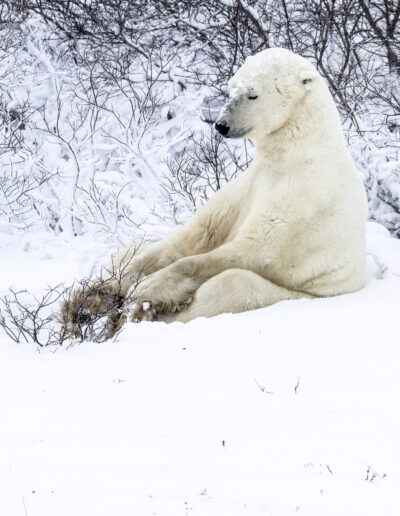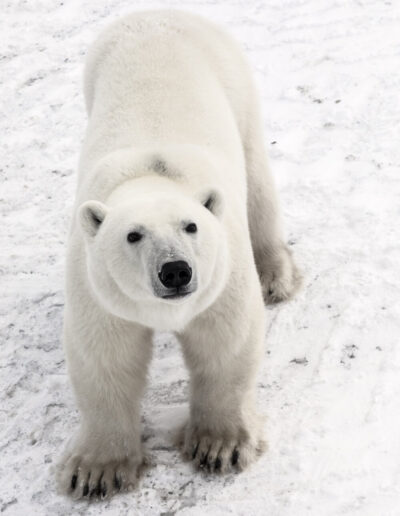Polar Bears of Hudson Bay
Global warming is an undisputed fact in the scientific world. Nowhere is this phenomenon more evident than in the Arctic. Sea ice in the Arctic is shrinking 14 percent per decade and satellites show there is about 770,000 square miles less sea ice now than the 1981 to 2010 median (National Geographic, February 1, 2018). According to Anthony Pagano, a wildlife biologist, polar bears burn over 12,000 calories a day. Their main prey is ringed seals which they hunt on the arctic sea ice. Their sense of smell is acute and it is believed they can smell seals from a mile away. Their large forelegs and conical-shaped head allow them to grasp and pull seals from the sea through holes in the ice where they emerge to breathe. As the polar ice melts in the spring the bears migrate onto the tundra surrounding Churchill. Here they are unable to find seals and must live off their stored blubber. The temperature on the tundra in November is 10-15 degrees Fahrenheit below zero with wind chills 0f 24-25 below zero. To conserve energy they reduce their activity and often burrow into the snow cover. We left each morning before sunrise on “polar rovers”, large platform vehicles, from which we searched for, and photographed these beautiful creatures. Our guide instructed us to scan the tundra and look for “potato chips” ( the bear’s fur is slightly yellow against the stark white of the snow). We were fortunate to have over 40 bear sightings including females with cubs and young males “sparring” (where they practice the skills they will need when challenging adult males during the breeding season). Many of the bears are curious and approach the rovers. We were warned not to extend our arms or hands out the windows or over platform walls as the bears might attempt to pull us off the vehicle. One of my fellow photographers dropped a lens hood onto the tundra. A bear smelled it, picked it up in its mouth, and spit it out when he found it unpalatable. In addition to the bears, we saw caribou, ptarmigans, red fox, and arctic hare.
The town of Churchill has 800 permanent residents who depend on visitors who come in November to see bears, January to see the Northern Lights, and in summer to see Beluga whales in Hudson Bay. Amongst them are talented artists who paint murals on garage doors and building sides (including the bear “Jail” where conservationists hold problem bears that wander into town) to celebrate the wildlife of Hudson Bay.




































